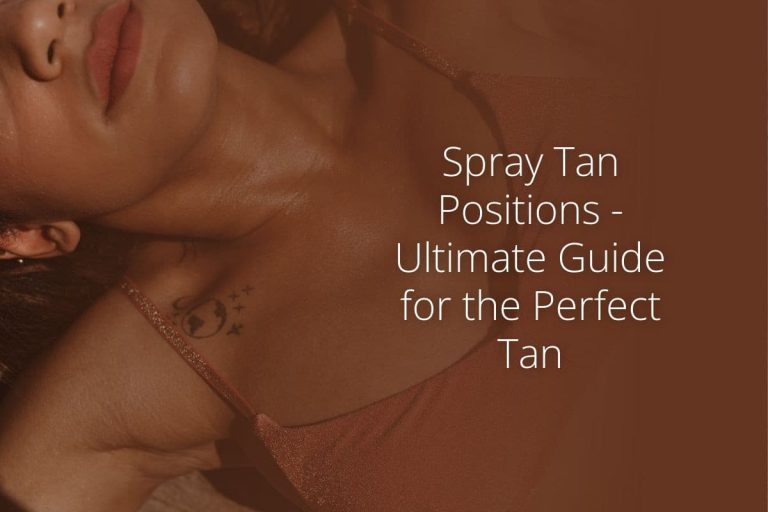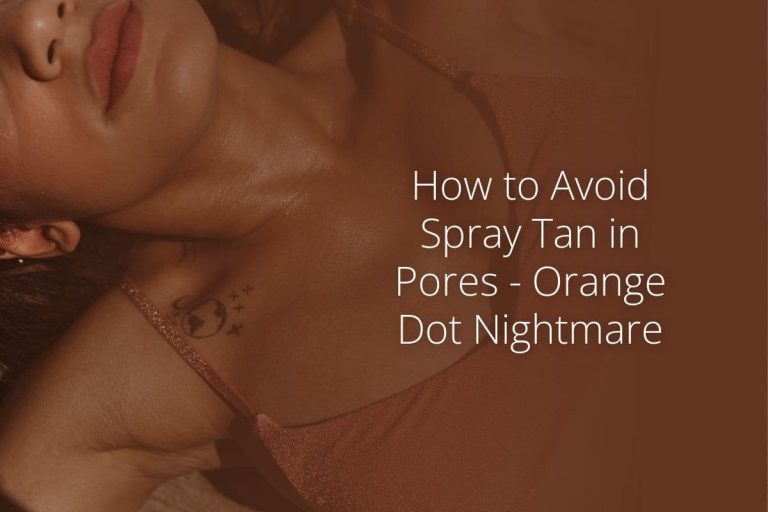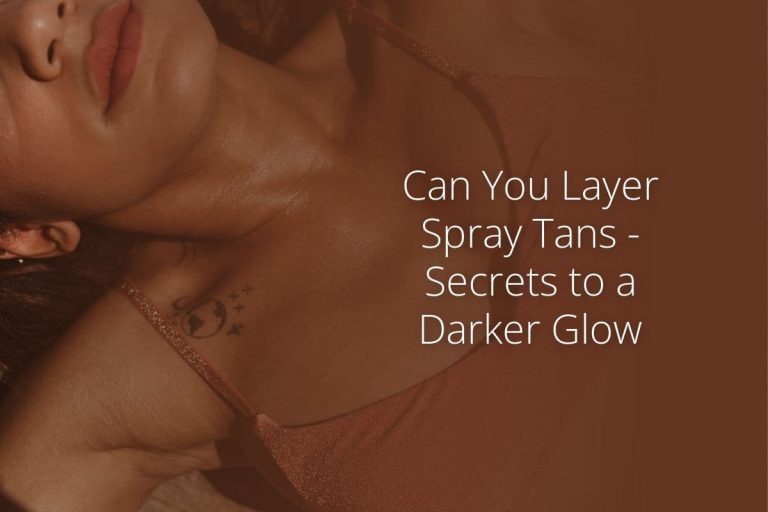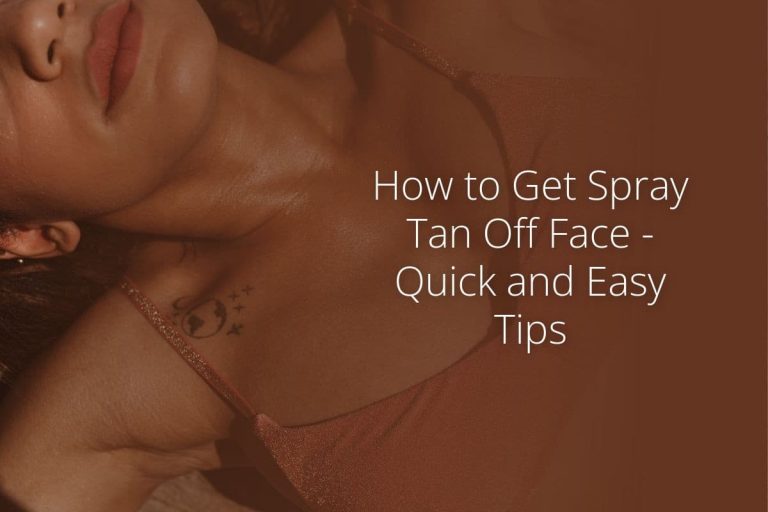
Prior to spray tanning, one might question whether the process offers any protection against the sun’s harmful rays. Although it might seem plausible that a spray tan could act as a barrier, it’s essential to explore this assumption before relying on it for sun protection.
Contrary to common belief, a spray tan does not provide any significant protection against sunburn. The process of spray tanning only affects the outermost layer of your skin and does not increase the skin’s resistance to UV rays. Therefore, even with a spray tan, you should still use sunscreen with an adequate SPF level to protect your skin from sunburn.
There are numerous other strategies and products that can ensure your skin stays safe under the sun. From protective clothing and accessories to timing your outdoor activities, there’s a lot more to learn about sun safety. In this article, we’re going to explore some other ways you can protect your skin from the sun’s harmful rays.
Do Sunless Tanning Products Provide Sunburn Protection?
Sunless tanning products, including spray tan solutions, do not offer inherent protection against sunburn while on vacation. While spray tanning and spray tan solutions may darken the skin temporarily, they do not contain SPF or shield the skin from UV rays. So, if you’re planning a vacation, don’t rely solely on spray tanning for sun protection. When going on vacation, it’s crucial to continue using sunscreen when using sunless tanning products to prevent sunburn.
Relying solely on spray tan for sun protection during vacation can lead to severe burns if proper precautions are not taken. These spray tan solutions lack the necessary ingredients for adequate UV protection during spray tanning sessions, especially when preparing for a vacation. Therefore, it is important to understand that spray tan alone does not prevent sunburns.
To ensure effective sun protection during spray tanning, it is recommended to follow these guidelines for using spray tan solution.
- Apply a broad-spectrum sunscreen with a high Sun Protection Factor (SPF) before going outside for spray tanning.
- Reapply sunscreen every two hours or more frequently if sweating, swimming, or getting a spray tan.
- Seek shade during peak sunlight hours when the UV rays are strongest for optimal spray tanning results.
- When getting a spray tan, it is important to wear protective clothing like hats, sunglasses, and long-sleeved shirts.
- Avoid prolonged exposure to direct sunlight.
While spray tan can enhance your appearance and give you a bronzed glow, it should never be considered a substitute for proper sun protection. By combining the use of sunscreen with sunless tanning products, you can enjoy a beautiful tan without risking painful sunburns.
Remember, prevention is key. So always prioritize your safety by practicing responsible sun care habits in addition to using any cosmetic products.
Exploring the Relationship Between Fake Tan and Sunburn
Fake tan, also known as spray tan, is a popular method for achieving a bronzed look without sunbathing. Many people wonder if fake tan can prevent sunburns and protect their skin from harmful UV rays. Let’s delve into this relationship to understand the facts.
- Fake tan does not create a physical barrier like sunscreen does: Unlike sunscreen, which forms a protective shield on the skin, fake tan does not provide any physical barrier against UV radiation. It primarily works by coloring the outermost layer of dead skin cells, giving you a temporary tanned appearance.
- The illusion of protection: While the darkened color of fake tan may give an illusion of protection, it does not block harmful UV rays. It’s essential to remember that even with a tanned look, your skin remains vulnerable to sun exposure.
- Avoiding misconceptions: Understanding this relationship helps dispel common misconceptions about fake tan’s ability to prevent sunburns. Relying solely on fake tan without taking proper sun protection measures can lead to skin damage, including sunburns, premature aging, and an increased risk of skin cancer.
By keeping these points in mind, you can make informed decisions about using fake tan and protecting your skin from the damaging effects of UV rays. Remember that while fake tans offer a healthy glow without sunbathing, they do not replace the need for sunscreen or other forms of sun protection.
So go ahead and enjoy your tanner but always prioritize your skin’s health by using sunscreen when exposed to the sun for prolonged periods!
Understanding Sunless Tanning and its Limitations
Sunless tanning methods, such as spray tans, involve applying a chemical solution to darken the skin temporarily. These sunless tans do not stimulate melanin production or provide any natural defense against UV radiation. It’s important to recognize these limitations in order to have realistic expectations when using sunless tanning products.
The duration of a spray tan’s effect varies depending on factors like individual skin type and aftercare practices. For some individuals, the sunless tan may last up to a week before fading gradually. However, others may experience a shorter duration due to factors like frequent showers or excessive sweating.
To make the most out of your sunless tan, it is advisable to follow proper aftercare practices. This includes moisturizing regularly, avoiding exfoliation or harsh scrubbing, and minimizing exposure to chlorinated pools or hot tubs. By taking care of your skin and following these guidelines, you can extend the longevity of your sunless tan.
While spray tans can provide a temporary bronzed appearance without the need for harmful UV exposure, they do not offer protection against sunburn. It is crucial to continue practicing safe sun habits by using sunscreen with an appropriate SPF and seeking shade during peak hours of sunlight.
Potential Risks and Considerations with Spray Tanning
Spray tanning has become a popular alternative to traditional tanning methods like tanning beds. However, it’s important to be aware of the potential risks and considerations associated with spray tans.
- Some individuals may experience allergic reactions or skin irritations from the chemicals used in spray tans. It’s crucial to patch test before applying a full-body spray tan to identify any adverse reactions.
- Spray tanning booths can pose risks if proper hygiene practices, such as regular cleaning and sanitization, are not followed. This increases the likelihood of bacterial or fungal infections. Make sure to choose reputable salons that prioritize cleanliness.
- Understanding these potential risks allows for informed decision-making when considering spray tanning as an option. While many people achieve a beautiful bronzed glow without any issues, it’s essential to weigh the benefits against the potential drawbacks.
Debunking Myths: Spray Tan, Lasting Effects, and Skin Discoloration
In conclusion, while spray tans may give you a sun-kissed glow, they do not provide any protection against sunburn. It’s important to remember that a fake tan does not act as a barrier between your skin and harmful UV rays. So, even if you have a beautiful bronzed look, you still need to take necessary precautions when exposing yourself to the sun. Keep in mind that sunscreen is your best friend.
Now that you’re armed with this knowledge about spray tans and sunburn prevention, make sure to take care of your skin by using sunscreen regularly. Remember, prevention is key. So next time you’re planning on spending time under the sun, don’t forget to slather on that SPF and enjoy the sunny days worry-free!
FAQs:
Can I apply sunscreen over my spray tan?
Yes! In fact, it’s highly recommended. Applying sunscreen over your spray tan will help protect your skin from harmful UV rays and prevent sunburn.
How often should I reapply sunscreen if I have a spray tan?
It’s important to follow the instructions provided by the sunscreen manufacturer. However, as a general rule of thumb, reapply every two hours or more frequently if you are sweating or swimming.
Will my spray tan fade faster if I spend time in the sun?
Yes, exposure to sunlight can cause your spray tan to fade faster. To prolong its lifespan, make sure to apply sunscreen regularly and limit direct exposure to the sun.
Can I get a natural-looking tan without risking sunburn?
Absolutely! If you want a natural-looking tan without risking sunburn or premature aging of the skin, consider using self-tanning lotions or mousses instead of exposing yourself to harmful UV rays.
Are there any other benefits to using sunscreen besides sunburn prevention?
Yes, besides preventing sunburn, sunscreen also helps protect your skin from premature aging, wrinkles, and reduces the risk of skin cancer. It’s an essential part of any skincare routine.






